Two are better than one: Astronomers combine Webb’s first images with Chandra's X-ray vision
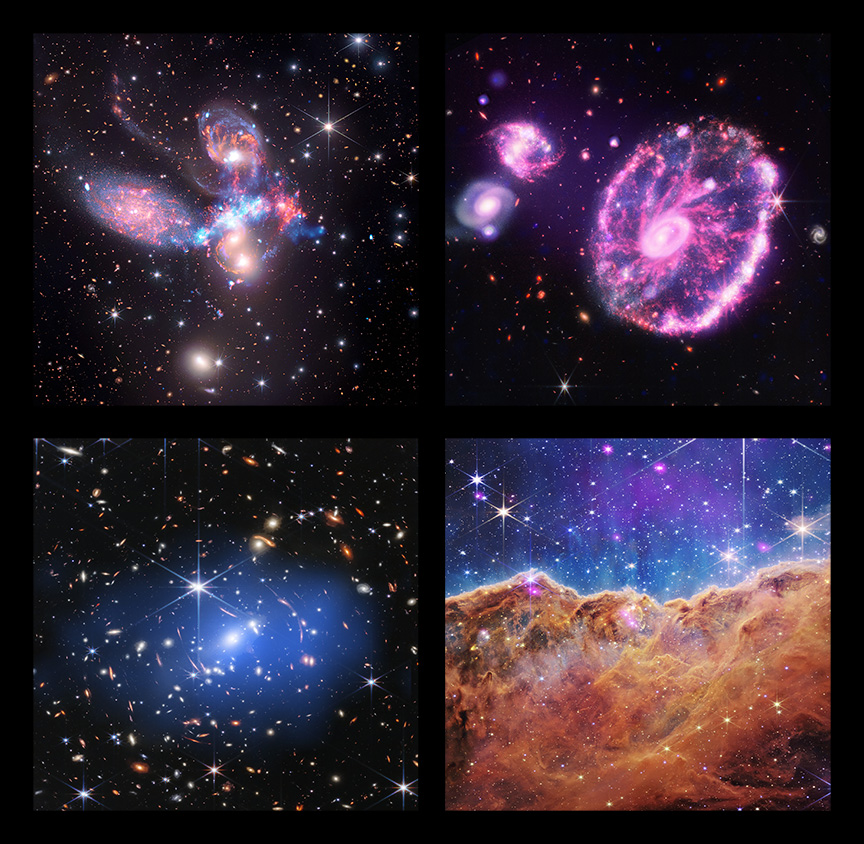
In July 2022, NASA's James Webb Space Telescope released images from some of its earliest observations, soon after the telescope finished its commissioning process. Now, astronomers have combined infrared data from Webb's first image release with X-rays collected by the agency's Chandra X-ray Observatory, demonstrating how the two premium observatories can complement each other.
Stephan's Quintet, Cartwheel Galaxy, galaxy cluster SMACS J0723 and Carina Nebula were among the first images released by the Webb telescope. NASA's Chandra had previously observed these objects with its X-ray vision.
Below are the composite images of these four objects:
Stephan's Quintet
The Webb image (red, orange, yellow, green, blue) of Stephan's Quintet - a visual grouping of five galaxies - features never-seen-before details of the results of the galactic interactions. The Chandra data (light blue) of this galaxy group has uncovered a shock wave that heats gas to tens of millions of degrees, as one of the galaxies passes through the others at speeds of around 2 million miles per hour.
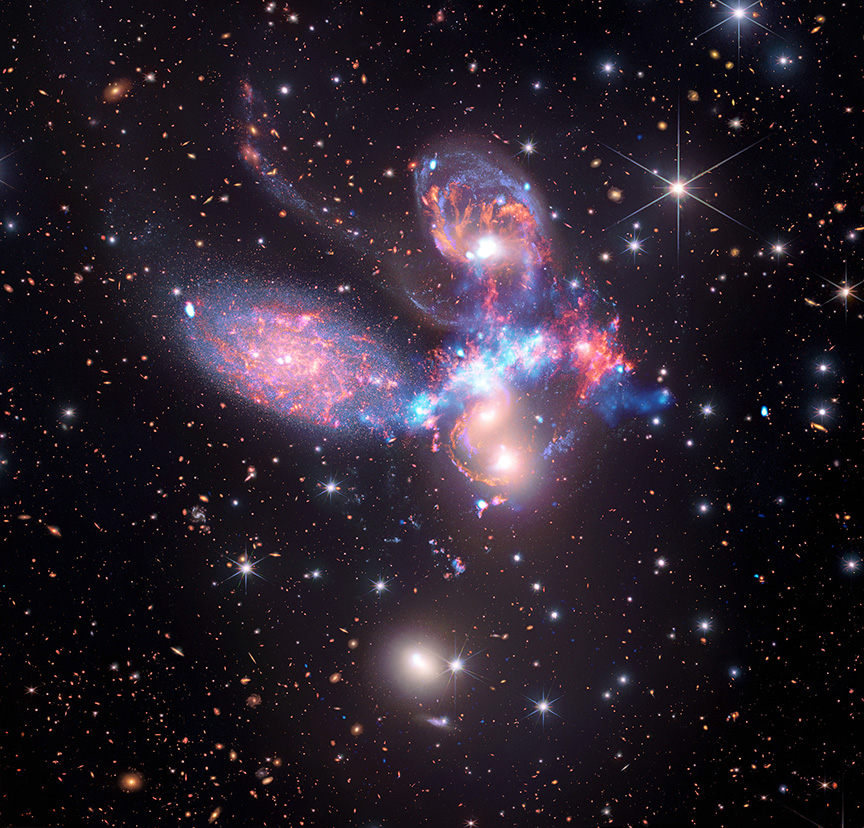 Image Credit: X-ray: NASA/CXC/SAO; IR (Spitzer): NASA/JPL-Caltech; IR (Webb): NASA/ESA/CSA/STScI
Image Credit: X-ray: NASA/CXC/SAO; IR (Spitzer): NASA/JPL-Caltech; IR (Webb): NASA/ESA/CSA/STScI
This new composite image of Stephan's Quintet also includes infrared data from NASA's now-retired Spitzer Space Telescope (red, green, blue).
Cartwheel Galaxy
The Cartwheel Galaxy, located about 500 million light-years away in the Sculptor constellation, looks like the wheel of a wagon. This is the result of a high-speed collision between a large spiral galaxy and a smaller galaxy.
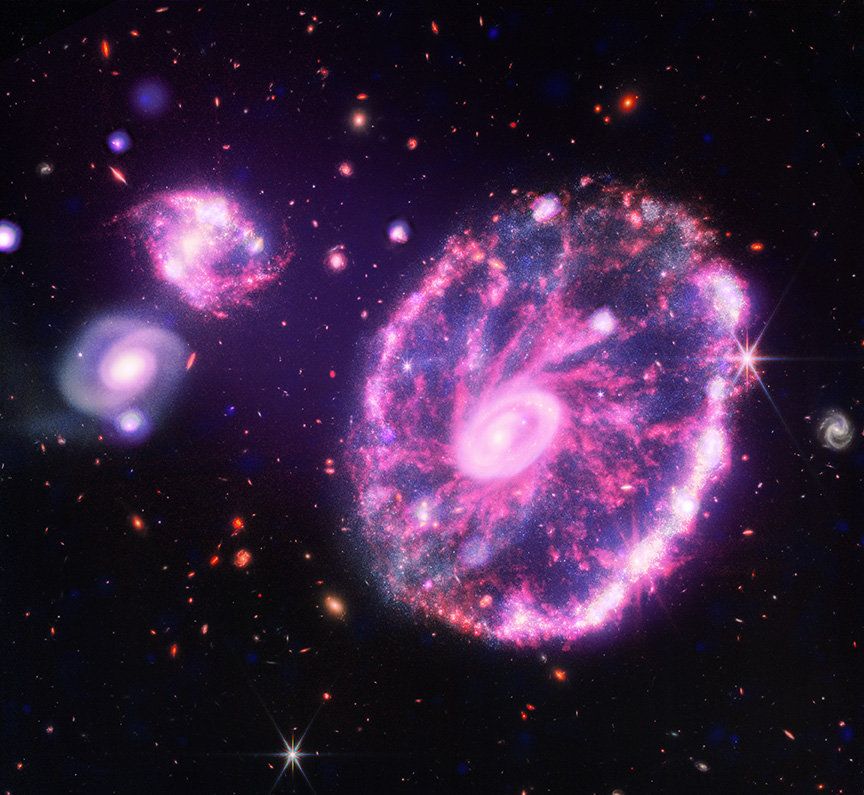 Image Credit: X-ray: NASA/CXC; IR: NASA/ESA/CSA/STScI
Image Credit: X-ray: NASA/CXC; IR: NASA/ESA/CSA/STScI
X-rays seen by Chandra (blue and purple) come from superheated gas, individual exploded stars, and neutron stars and black holes pulling material from companion stars. Webb's infrared view (red, orange, yellow, green, blue) shows the Cartwheel galaxy plus two smaller companion galaxies against a backdrop of many more distant galactic cousins.
SMACS J0723
The Webb image of galaxy cluster SMACS 0723 shows thousands of galaxies, including the faintest objects ever observed in the infrared.
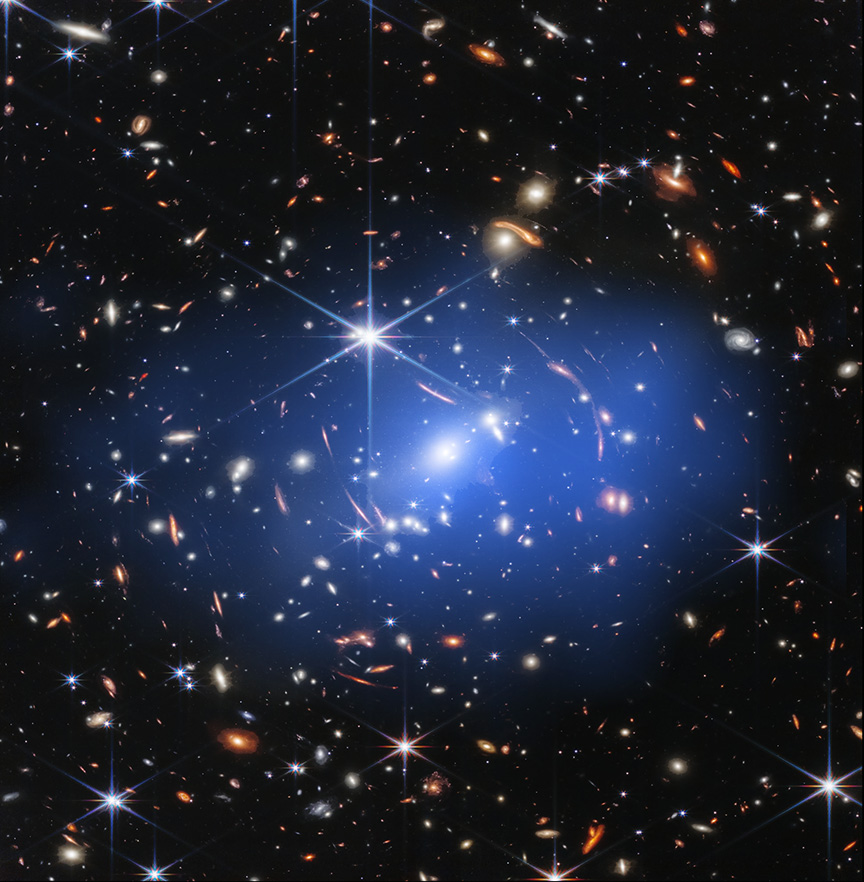 Image Credit: X-ray: NASA/CXC/Durham Univ./G. Mahler; IR: NASA/ESA/CSA/STScI
Image Credit: X-ray: NASA/CXC/Durham Univ./G. Mahler; IR: NASA/ESA/CSA/STScI
The Chandra data (blue) reveals gas with temperatures of tens of millions of degrees, possessing a total mass of about 100 trillion times that of the Sun, several times higher than the mass of all the galaxies in the SMACS 0723 cluster.
Carina Nebula
Webb revealed (red, orange, yellow, green, cyan, and blue) emerging stellar nurseries and individual stars in the Carina Nebula that were previously obscured. Images of Cosmic Cliffs showcase the telescope's capabilities to peer through cosmic dust, shedding new light on how stars form.
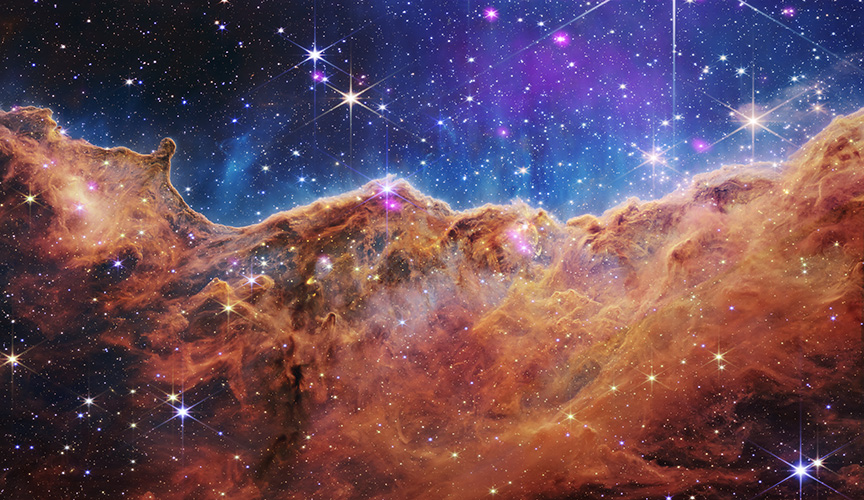 Image Credit: X-ray: NASA/CXC/Univ. Observ. Munich/T. Preibisch et al.; IR: NASA/ESA/CSA/STScIX-ray: NASA/CXC; IR: NASA/ESA/CSA/STScI
Image Credit: X-ray: NASA/CXC/Univ. Observ. Munich/T. Preibisch et al.; IR: NASA/ESA/CSA/STScIX-ray: NASA/CXC; IR: NASA/ESA/CSA/STScI
Chandra's data of the Cosmic Cliffs (pink) reveals over a dozen individual X-ray sources, which are mostly stars located in the outer region of a star cluster in the Carina Nebula with ages between 1 and 2 million years old.
More details can be found here.










